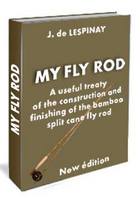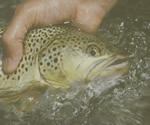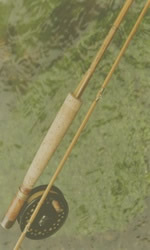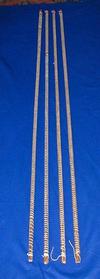Bamboo Fly Rod Building
|
EXCERPTS CHAPTER II
The preliminary planing to build a bamboo fly rod
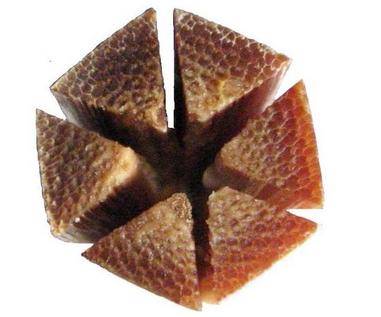
HOW TO BUILD A BAMBOO
FLYROD YOURSELF
Among all the rod-making operations, the one that beginners and many others would wish to avoid is the preliminary planning of the strips.
Isosceles or scalene triangles and the inability to solve the proble (…)
(…)
THE EQUILATERAL CROSS SECTION
Once the strips have been straightened, the nodes well flattened and the grain is sufficiently straight, rough planing and the subsequent operations will convert their rectangular cross sections into the tapered equilateral triangles required.
ROUGH PLANING FORM
The rough planing form can be of wood or metal and should be between 70cm and 1metre in length. Here are several examples. (...)
The Garrison Rough Planing Form
This form is shown in cutaway view (Photo 2.3). Note the 57° angle instead of 60°. This difference is intended to compensate for the angle deviation generated … (…)
Making the Form
The form is made using two cold rolled steel bars 20 x 20mm and 50cms long, each having a 5mm deep 30° chamfer along the whole length on one edge (25 x 25 mm hard-wood may also be used). Place the two bars side by side … (…)
The Jorgensen/Jacobsen form
(…)
The form with grooves
Displayed in the J. P. Péquegnot book : L'art de la pêche à la mouche sèche, this form features simplicity and dependability (Sketch 2.8). (…)
Rough machining
I used to rough my strips by hand but then Paul Agostini told me about, and later built for me a machine which directly produces the rough triangular shaped strips. It works with the help of a router ... (…)
Building principles of the machine
This topic is to describe the principles of assembling this machine. The actual sizes of these machines are variable. To a wood frame (size 45 x 20 x 2 cm), you attach … (...)
System with carbide cutting plates
The sanding tool with two chamfered disks coated with abrasive is simple and efficient. However somebody has designed ... (…)
Bamboo fly rod building ©2010
